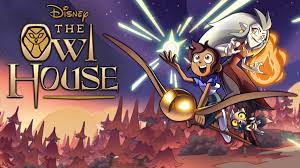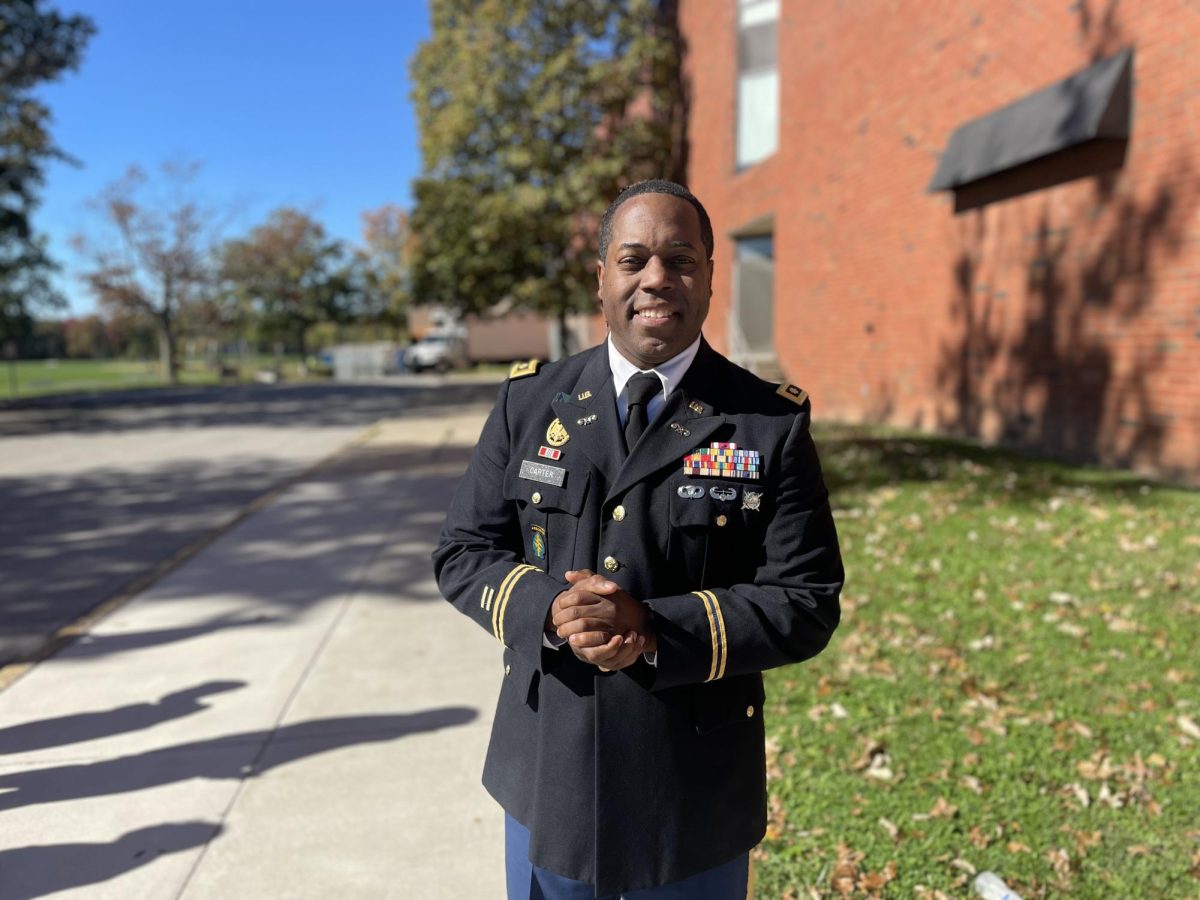Mature Themes Improve Current Children’s Shows
June 2, 2022
Warning: contains major spoilers for “The Owl House,” “She-ra and the Princesses of Power,” “Amphibia,” and, “Centaurworld.”
Content Warnings: mentions of abuse, su*cide, trauma
Have you ever watched a cartoon that was intended for a younger audience and there was a particular scene that made your jaw drop and question, “Is this actually for little kids?” Not because it’s so inappropriate but because there are so many “real-life” elements and themes, mature topics that some aren’t used to seeing on television intended for children.
When I first started watching cartoons intended for little kids, I started with “The Owl House,” created by Dana Terrace and owned by Disney. I’ll be honest here, I only started watching it for its LGBTQ+ representation, but within half of the first episode, I was genuinely interested in the show’s plot and characters.
Ever since I first saw the main character, Luz Noceda, I instantly grew attached to her character dynamic, solely because I saw myself in her. She never really fits in anywhere, which is why she’s so adamant about becoming a witch when she accidentally goes into the demon realm. Luz is unapologetically herself, which didn’t exactly work out back at home. This caused her mom to try to send her to a literal reality camp at the beginning of the show, which would hopefully make her less imaginative. The reality camp also alludes to conversion camps, which try to change someone’s sexuality to “better fit society.”
“The Owl House” also has many elements of emotional abuse, manipulation, and even physical abuse in many of the characters’ plot lines. By showing this, the younger audiences might learn how to recognize these types of actions, or at least know about them which can encourage a healthy conversation with their parents. The show also hints at one of the character’s attempts at suic*de which honestly can go right over the younger audience’s head. However, if the children watching the show do happen to ask a question about what is happening, it can spark an educational conversation on why people do what they do.
Of course, it’s much more than that. Many people may not understand why “adult themes” should be in children’s shows, but many of these new cartoons do it correctly. Even if the younger kids don’t understand it and it’s mainly for an older audience, the themes are still subtle enough that it won’t confuse them from the show or scare them. Many other cartoons that have come out have shown the same results.
I’ll admit I have actively avoided “She-Ra and the Princesses of Power,” created by ND Stevenson, mainly because of the fact that it had princesses, but when I began watching it out of boredom, I was pleasantly surprised. The story follows Adora, an ex-horde member who joined The Alliance after discovering she was a princess and that the Horde was evil. There are numerous hints of abuse within the Horde hatchery, which gives the message that “good and evil” aren’t so simple. We follow her and her new friends as she learns new things and gets better with her newfound powers; such as learning how to be a hero, after unknowingly being a villain for so long, and being able to summon She-Ra on command.
The storyline is incredible, and there was amazing representation in “She-Ra” as well, with realistic body types, races, mental illnesses, sexualities, and gender identities. However, the element that captivated me the most was the different kinds of villains.
For one, the villains aren’t exactly your typical kind of villains. They were complex and they made your heartache, you might even relate to one or two of them. On The Inspector Gadget Show, the villain, Dr. Claw, is just evil and fun, but that’s all there is to them. In She-ra, these villains are just scared, traumatized people that never broke a cycle of abuse.
Pretty much all of the villains are written in such a way that they’re actually somewhat likable. Scorpia isn’t very evil and despite being on the villain’s side willingly, she is what many would call “an adorable cinnamon roll.” Shadow Weaver just wants to prove herself to Hordak. Catra, another villain featured in the show, is just an angry cat with zero coping mechanisms. Some people watching this could even claim to see themselves in these characters, which is quite important.
There are so many more cartoons with mature elements that I’m just not used to seeing. In Amphibia, Marcy, a 13-year-old, was stabbed in the back by a giant king in front of her best friend. A whaletaur from Centaurworld sings a cryptid song about suic*de, and in the new My Little Pony movie, the entire movie is a reference to racism. All the different kinds of ponies hate each other for ridiculous reasons, mere rumors created by their ancestors to keep them away from each other that got out of hand eventually.
As far as I have seen on numerous social media platforms, those around my own age have taken to watching these types of cartoons just as much as actual children. There will be fan arts of the characters and edits of their favorite heart-wrenching scenes.
Many of these cartoons don’t shy away from certain aspects such as childhood trauma, manipulation, and death. The characters all deal with hardships, but they don’t just get over them with a single simple solution. They take losses, physically and mentally. They show real-life themes and elements but they don’t do it in a way that would be deemed inappropriate for a child, in my opinion, it’s just right. They show bravery, which can encourage the audience, no matter the age, to keep pushing when things get hard. These types of shows have complex characters: villains going good and the hero’s morals becoming unbalanced.
However, many people would argue that there shouldn’t be “adult” elements in cartoons. They think that it would desensitize children from the things in the “real world” but it’s quite the opposite. Many people, especially older people, assume that children don’t understand a lot of situations within the real world and that they need everything to be filled with rainbows and sunshine for them, or else they will be traumatized for life. The truth is you would be quite surprised at how many complex topics a kid can handle in a controlled setting.
In my whole-hearted opinion, I think that putting “mature themes” in children’s shows this way is incredibly helpful and a way that children can understand certain topics. It allows them to view certain things such as dealing with loss, substance abuse, or discrimination in a safe, controlled way. A child will be invested in a cartoon more than they would if a parent was trying to explain something important.
It won’t desensitize children as many people say, but instead, it will prepare them for the real world. They will enter it one day no matter what, it doesn’t exactly make sense to shelter them from everything and then assume they will know how to deal with it once it comes. For many children, sadly, the “real world” hits them a bit younger than expected. Even if it comes at an older age because it was never rooted in them on how to cope with it it could prove to cause some problems in life. At that point, you could have traumatized kids who can’t cope with what is going on, those with depression or anxiety.
Children could see characters dealing with certain issues such as loss, discrimination, substance abuse, dealing with mental issues, and mental or physical abuse. who see their favorite characters dealing with the same things as them won’t feel as alone and might even learn how to cope with these situations. These shows could be the only way a child learns these skills when they are in negative situations.
Of course, sexual themes should still be excluded, as that is something younger children should not be exposed to so freely, especially without their parent’s knowledge. Exposing a young child to pornographic material without any type of control can encourage child-on-child sexual abuse, which can later turn into sexual trauma.
Cartoons are mostly used to teach children. Usually about taking responsibility for your actions, being kind to others, and knowing when to ask for help. However, dealing with loss, discrimination, and even other things that may seem too dark, even for some actual adults, are also important lessons children need to learn for the real world.



Muma • Jun 4, 2022 at 7:40 pm
This is really awesome…I’m so proud of you !! Tag me in everything so I can read more from you!!
Mr. Cumberland • Jun 3, 2022 at 9:41 am
Well done analyzing and synthesizing the ideas from these shows.
Chante Hampton • Jun 2, 2022 at 1:57 pm
Amazing babygirl you did that well written❤️❤️
Allison Simpkins • Jun 2, 2022 at 1:47 pm
Thank you for this article I’m sure it will help us parents as well as children the concept of your analysis. Very well written ?? ?
Allison Simpkins